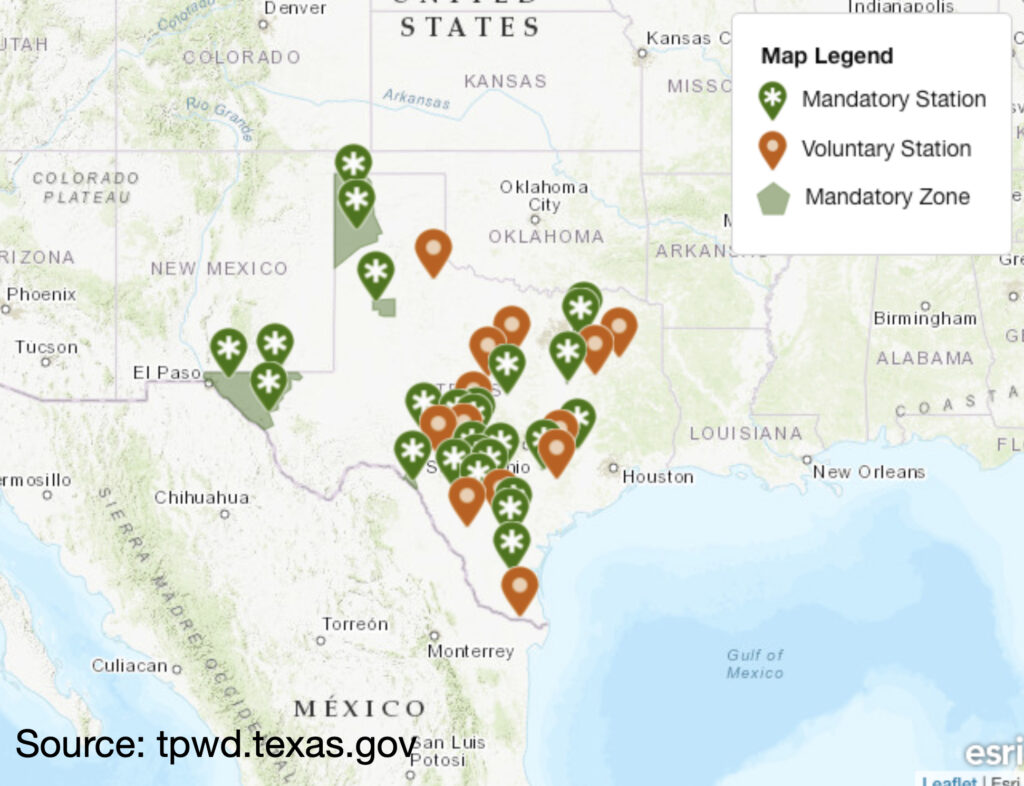By: Mark Matthews, Partner/Broker Associate
Key Takeaways
- CWD regulations impact ranches managing various species.
- 17 CWD zones significantly affect large land areas.
- Sellers must disclose material issues affecting property value.
- Knowledgeable brokers aid in navigating CWD complexities.

Chronic Wasting Disease (CWD) is here and an integral part of the landscape in Texas. In this discussion, I aim to shed light on a crucial aspect often overlooked in the discourse surrounding CWD – the implications for buying and selling ranch properties, and the responsibility of disclosing pertinent information to potential buyers.
Having navigated the realm of CWD and its regulatory landscape for nearly two decades, both as a landowner and a biologist, I’ve witnessed a rapid evolution in regulations, particularly in the last eight years since the initial detection of CWD in a captive white-tailed deer in Medina County. The proliferation of CWD zones, testing mandates, carcass movement restrictions, and herd management plans has been staggering, with regulatory changes occurring at an alarming frequency. Much attention about this disease has been given by state agencies, non-governmental organizations (NGOs), and stakeholders which has saturated the information landscape, making it difficult for landowners and hunters to remain informed.
Having navigated the realm of CWD and its regulatory landscape for nearly two decades… I’ve witnessed a rapid evolution in regulations, particularly in the last eight years
For licensed real estate professionals in Texas, disclosure requirements are not unfamiliar territory. It’s a fundamental aspect of our training to understand what must be disclosed by sellers to potential buyers, and likewise, for listing brokers to divulge what they know or should know to prospective buyers. With the Texas Real Estate Commission’s recent emphasis on brokers and agents working within their areas of expertise, the unique complexities of farm and ranch brokerage, including issues like CWD, come into focus.
State law mandates that sellers disclose any known material issues that could impact a property’s value or desirability, while agents and brokers are obligated to disclose any known material issues if they are aware of or should be aware of their existence. The regulations surrounding CWD, in my opinion, could have an affect on a property’s value or desirability.

CWD regulations can have an affect on ranches that manage and/or hunt white-tailed deer, mule deer, elk, red deer, sika or other susceptible species. The Texas Parks and Wildlife Department (TPWD) establishes regulations regarding white-tailed deer and mule deer, both susceptible species, with different requirements for ranches located in CWD zones, that are trace out facilities, that have breeding facilities, or that have released deer from breeding facilities. The Texas Animal Health Commission (TAHC) has established regulations for any harvest, management, or movement of elk, red deer, sika or any other susceptible species. Among other things, these regulations establish what is required by the landowner and hunter when one of these species is harvested and if and when one of these species is allowed to be sold, purchased, or transported. The regulations are complicated, have evolved rapidly, and have changed frequently.

Notably, CWD zones, currently numbering 17 (with several more developing), significantly impact vast swathes of land. For instance, within these zones, regulations mandate testing and carcass movement restrictions for TPWD regulated species harvested on the property. This entails sampling for CWD at designated TPWD stations or by certified samplers, with carcass removal restrictions in place. TAHC’s recent statewide regulation, implemented in fall 2023, further mandates CWD testing for elk, red deer, sika, and others, irrespective of their location within or outside a CWD zone.
The intricacies of CWD regulations and their potential implications for a given ranch are multifaceted. It’s imperative for buyers to be fully informed about these potential impacts when considering a property. Ultimately, it falls upon the seller to disclose these issues to potential buyers. Engaging knowledgeable brokers, well-versed in the nuances of CWD regulations, can significantly assist both buyers and sellers in navigating this complex terrain.